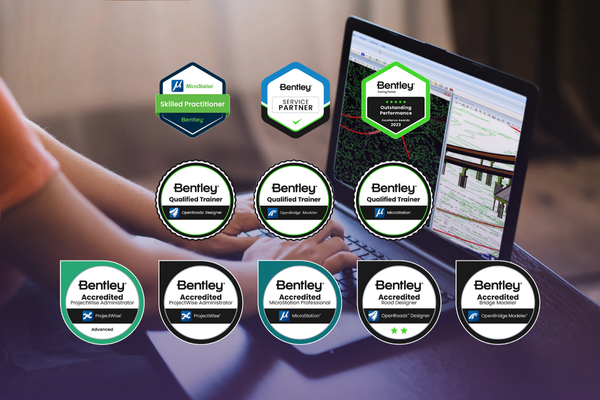At 5 Factor, we help bridge engineering and drafting teams harness the full power of OpenBridge Modeler and OpenBridge Designer through focused training, rapid-response support, and tailored configurations. From handling complex alignments to launching standards-driven environments, we deliver solutions that boost precision, speed up delivery, and keep projects compliant.
Our OpenBridge training gives your team the skills to model complex bridge structures, integrate seamlessly with roadway geometry, and produce precise, standards-compliant plan sets faster.
Get help with parametric modeling challenges, component library issues, standards alignment, DGNLIB configuration, and integration with OpenRoads geometry.
Launch with an OpenBridge environment designed for your workflow, including custom templates, feature definitions, annotation rules, DGNLIB-based standards libraries, and configurations.
Shorten delivery timelines, reduce rework, and achieve consistent, high-quality outputs by optimizing OpenBridge processes and enforcing standards from day one.

We deliver OpenBridge Modeler and OpenBridge Designer training to link bridge designs with roadway geometry, use parametric modeling tools, and create accurate plan sets, templates, reports, and 3D visualizations.
We provide support for OpenBridge fixing modeling issues, optimizing setups, and ensuring compliant designs while keeping projects on schedule


We configure and deploy OpenBridge for a fully standardized, BIM-ready environment—complete with templates, annotation rules, and workspace settings tailored to your requirements.
Our team has certifications for Bentley Qualified Trainer and Accredited Professional for OpenBridge, as well as we are an official Bentley Service Partner in the US.
The program includes both tools—Modeler for 3D parametric bridge modeling and Designer for analysis and design integration—so participants gain a complete workflow understanding from modeling through structural validation.
By setting up OpenBridge with pre-configured workspaces, resolving modeling issues quickly, and integrating with roadway geometry, we reduce rework and keep bridge design projects on track.
Training is hands-on and covers how to model common bridge elements, manage templates, and generate reports. Teams leave with practical skills to work faster and produce deliverables that meet standards.
Implementation takes the base software further by customizing the workspace with templates, feature definitions, and annotation rules that match DOT and client standards.
We handle a wide range of needs, from fixing modeling or rendering errors to helping configure standards and libraries. Our goal is to resolve issues quickly so your bridge models stay accurate and projects stay on schedule.